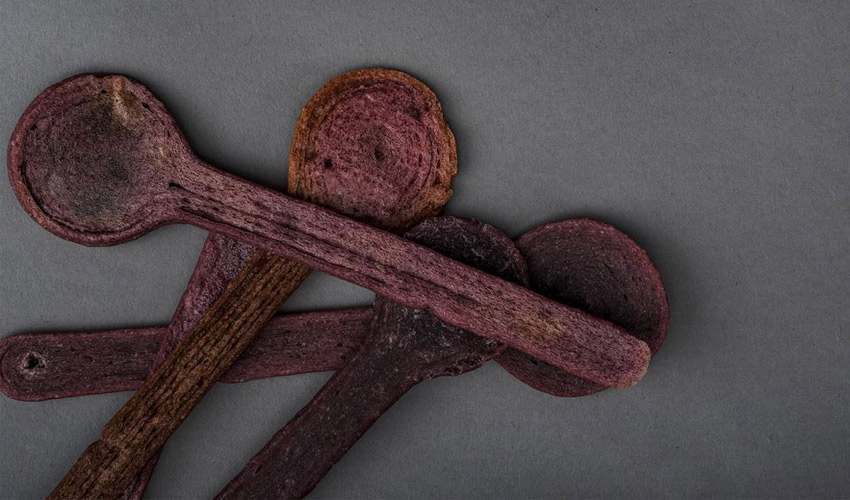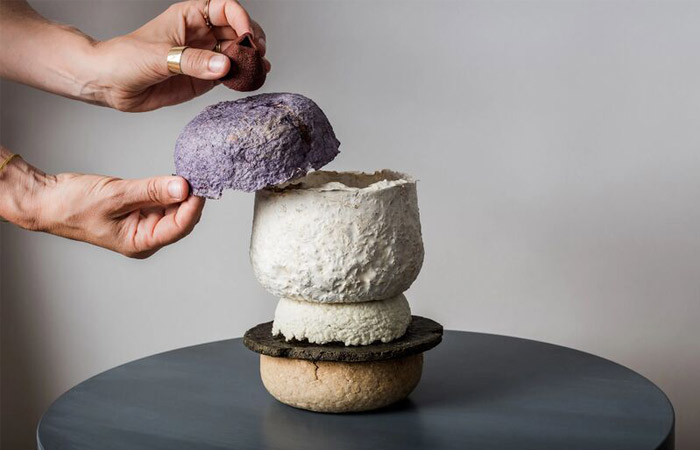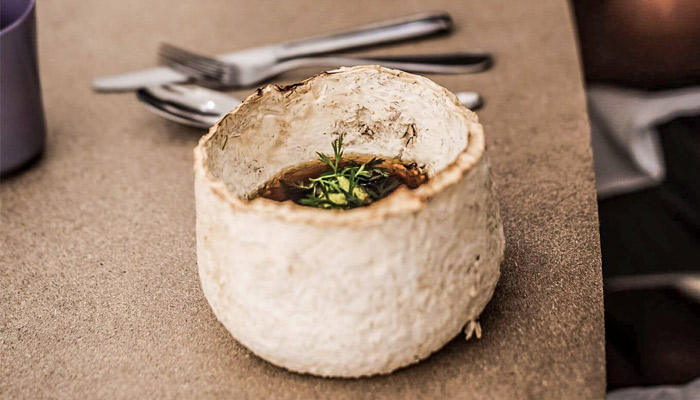Barbara Gollackner Has Exhibited a Collection of 3D Printed Tableware Made Out of Food Waste

During Vienna Design Week, which started on September 24, the design studio Barbara Gollackner has exhibited a very innovative collection made using a food 3D printer. Called Wasteware, it is a series of cutlery and dishes made from industrial but also personal food waste. The collection includes a variety of tableware such as cups, teaspoons, and more, all made from stale bread or pig skin. The waste is transformed into a paste that is then extruded on an FDM printer. The studio has a clear message with this collection. It wants to fight against food waste and the production of single-use dishes that have a negative effect on our environment.
One of the advantages of 3D printing is that it uses only the necessary material, thus reducing the amount needed and by extension waste. To make this even more environmentally friendly, thanks to 3D printing it is also often possible to reuse what waste there is, recovering it to create a new product, or even food. These circular economy projects are becoming more and more numerous. One example is Upprinting Food, a Dutch initiative that 3D prints different meals from food waste. The Barbara Gollackner studio is based on the same idea but prints tableware.

Photo Credits: Barbara Gollackner
Barbara Gollackner is an Austrian designer who noticed a simple but worrying trend. Namely that in 90 million tons of food per year is wasted, which is then added to the 30 million tons of waste from single-use dishes. Because of these, she decided to come up with possible solutions that could address both of these issues as well as ultimately encourage consumers and society to reduce their environmental impact. The designer first collected industrial waste from a meat factory in Austria as well as personal waste like bread. She explains, “One way we use the waste that we produce ourselves, on the other side we use industrial food waste, like pork skin. There are huge amounts of pork skin thrown in Austria by the meat industry.”
This waste is then turned into a paste to be easily extruded by a 3D printer: it is first dried or cooked, then mixed with mycelium (the vegetative part of mushrooms) to achieve the desired consistency. The designer explains that she can add water, breadcrumbs or other foods in some cases. Chef Peter König then comes along and 3D prints the desired shapes. Barbara wanted to keep the objects simple so as not to make the printing process too complex. So there are spoons, coffee cups, bowls, etc. The result is unusual since the different items take the color of an eggplant, recycled peas, etc..

The design has imagined several bowls and containers (photo credits: Foto beigestellt)
This long-term work – the designer has been working on this project for several months – allows in any case to raise a real social problem in an innovative and original way. What if she could encourage consumers to transform their food waste? You can find all the projects of the Austrian studio HERE.
What do you think of the Wasteware collection from Barbara Gollackner? Let us know in a comment below or on our Facebook and Twitter pages. Don’t forget to sign up for our free weekly newsletter, with all the latest news in 3D printing delivered straight to your inbox!






